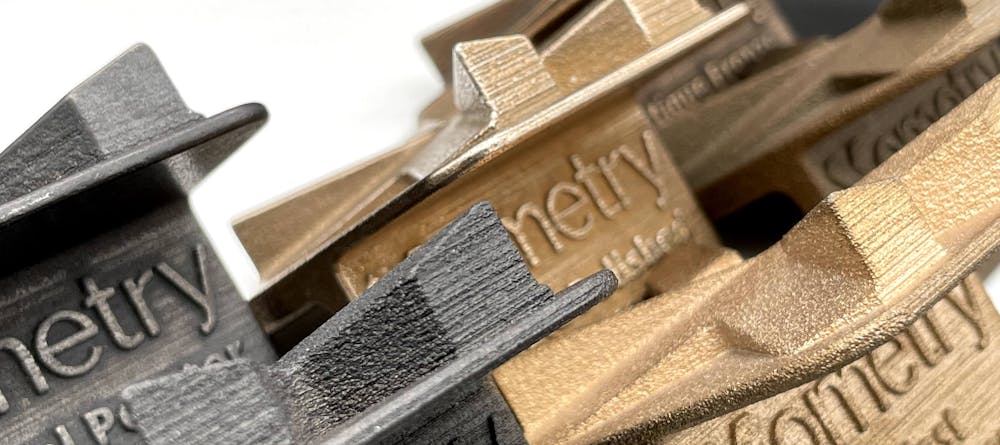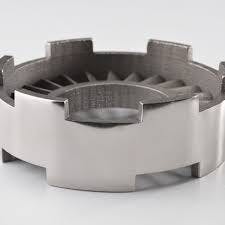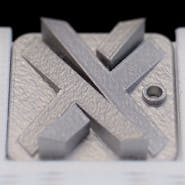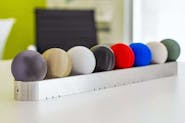X1 Metal 420i for Binder Jet 3D Printing
Get instant online quotes on 3D printed X1 Metal 420i parts. Free shipping on all US orders. ISO 9001:2015, ISO 13485 and AS9100D certified.

About X1 Metal 420i for Binder Jet 3D Printing
X1 Metal 420i (Stainless Steel Infiltrated with Bronze) is a matrix metal composite material composed of 60% 420 stainless steel and 40% bronze infiltrant. This material offers good mechanical properties and offers excellent wear resistance. 95%+ density.
Applications for X1 420i Metal 3D Printing
This material system is ideally suited for parts exposed to highly abrasive environments such as pump components, and parts for down-hole drilling and mining equipment. Additional applications include industrial components, molds, tooling, art objects, and decorative hardware.
Typical X1 420 Material Properties
| Material Properties | Test Method | Values |
|---|---|---|
Material Properties Tensile Strength - Ultimate Strength | Test Method ASTM E8 | Values 99 ksi (682 MPa) |
Material Properties Yield Strength (0.2% offset) | Test Method ASTM E8 | Values 66 ksi (455 MPa) |
Material Properties Elastic Modulus (ASTM E8) | Test Method ASTM E8 | Values 21.4 Mpsi (147 GPa) |
Material Properties Elongation | Test Method ASTM E8 | Values 2.3% |
Material Properties Hardness | Test Method ASTM E18 | Values 97 HRb |
Material Properties Fractional Density | Test Method MPIF 42 | Values 95%+ |
Material Properties Density | Test Method MPIF 42 | Values 0.284 lbs/in^3 (7.86 g/cm^3) |
Material Properties Machinability | Test Method
| Values Refer to ExOne for recommendations |
Material Properties Weldability | Test Method
| Values Use silicone bronze rod & TIG weld |
Material Properties Thermal Conductivity | Test Method ASTM E1530 | Values 13 BTU/hr ft °F (22.6 W/m°K) |
Material Properties Specific Heat | Test Method ASTM E1263 | Values 0.114 BTU/lb °F (478 J/kg°K) |
Material Properties Thermal Expansion Coefficient | Test Method ASTM E228 | Values 7.4 x 10-6/°F (13.4 x 10-6/°K) |
Source: ExOne
Surface Finish
- After sintering: ≈ 600 μin Ra (15 μm Ra )
- Bead blasting: ≈ 300 μin Ra (7.5 μm Ra )
- Barrel finishing: ≈ 50 μin Ra (1.25 μm Ra )
Post Processing
After printing is complete, the parts are cured in an oven, which enables the parts to be handled. After curing, the parts are sintered and infiltrated with bronze above 1100°C. Cool down can be varied to control the machinability and hardness of the material.
- Zirblast (Standard)
- Tumble Polished
- Medieval Pewter
- Damascus Steel
- Antique Bronze
- Wheat Penny

See All Our 3D Printed Materials


